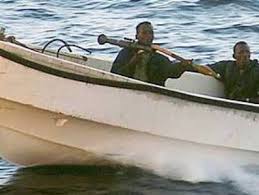 Unknown assailants who opened fire on a gas tanker last week off the coast of Yemen were also carrying a “substantial amount of explosives”, the vessel’s owner said, and a maritime source said it may have been an attempted suicide attack.
Unknown assailants who opened fire on a gas tanker last week off the coast of Yemen were also carrying a “substantial amount of explosives”, the vessel’s owner said, and a maritime source said it may have been an attempted suicide attack.
Security experts said the new details of the Oct. 25 incident would heighten concerns for shipping in the narrow Bab al-Mandab waterway at the entrance to the Red Sea, a major choke point in the world oil trade.
In an initial statement last week, shipping group Teekay (TK.N) said its LNG (liquefied natural gas) tanker Galicia Spirit had “experienced a suspected piracy attack” but no one had managed to board it.
In an update on Thursday, Teekay said it had now conducted an investigation with security experts. This indicated that “the skiff (small boat) that engaged in an attack on the Galicia Spirit using small arms was also carrying a substantial amount of explosives”.
It added: “While the intentions of the attackers and the use of the explosives is unknown, the investigation findings indicate that the explosives would have been sufficient to have caused significant damage to the vessel.
“It appears, however, that when the skiff was approximately 20m (metres) from the vessel, the explosives detonated, destroying the skiff and ending the attack.”
No details have emerged of how many attackers there were, or what happened to them, but maritime sources said the information to date indicated this was probably not piracy.
“If the circumstances are as described, it was an ambitious attempt carried out by people who didn’t expect to survive,” said one source with detailed knowledge of the area.
“An LNG vessel also has a double skin (hull), but if the explosives were enough to penetrate the main hull, then it is certainly possible that damage would have been done to the inner skin and gas could have escaped and ignited.”
Teekay said the vessel suffered minor damage with no injuries to the crew.
PREVIOUS ATTACKS
The incident, the first attack on a commercial ship since July, followed the launching of missiles from Yemen in recent weeks against military craft, including U.S. navy vessels.
Militants have launched successful maritime attacks in the area before. A suicide bombing carried out by al Qaeda, which has a powerful regional arm in Yemen, killed 17 sailors on the U.S. warship Cole in Aden’s port in 2000. Two years later, al Qaeda hit a French tanker in the Gulf of Aden, south of the Bab al-Mandab.
Maritime security sources said the attack on the Galicia Spirit occurred near Perim Island, just a few kilometres from the southern Yemeni coast and the site of a lighthouse for ships passing through the Bab al-Mandab.
“Attacks like these are not common and take a certain amount of training and resources to achieve,” said Michael Edey of British security firm Dryad Maritime. “It will obviously raise concerns for shipping in the area.”
While shipping companies have yet to divert ships, the stakes are high. Nearly 4 million barrels of oil are shipped daily to Europe, the United States and Asia via the Bab al-Mandab, as well as other commercial goods.
“Recent incidents off Somalia, the Bab al-Mandab and wider Indian Ocean indicate an increased threat level to shipping from piracy and maritime terrorism,” British maritime security firm MAST said in a report this week.
A civil war is raging in Yemen between the Iran-aligned Houthi movement, backed by troops loyal to former President Ali Abdullah Saleh, and the internationally recognised government of Abd Rabbu Mansour al-Hadi, backed by Saudi Arabia.
The United States carried out cruise missile strikes on Oct. 15 against radar sites in Houthi-controlled areas of Yemen after two confirmed attempts to hit a U.S. Navy destroyer with coastal cruise missiles close to the Bab al-Mandab. The Houthi movement has denied firing on the USS Mason.
The Houthis have confirmed a separate earlier attack on a United Arab Emirates vessel in the area.
Source: Reuters (Editing by Mark Trevelyan)
